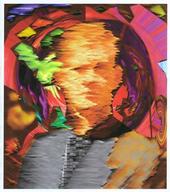Music Sampes:
33 Synchronous Piano Pieces
a Cycle in 3 Concerts / 9 Movements.
Concert 1:
1st Movement (Pieces 1 to 3) - 14:41
2nd Movement (Pieces 4 and 5) - 10:30
3rd Movement (Pieces 6 and 7) - 8:14
4th Movement (Pieces 8 to 11 and Reprise) - 37:25*
Total Time - 1:11:11
*The 4th Movement is too long to stream at MySpace.
[Concerts 2 & 3 Coming Soon]
From the Booklet Notes:
This cycle is "synchronous," because the form of each movement and the overall structure of the cycle are built upon the interrelationships of differing pieces of music, sometimes sounding individually and sometimes in simultaneity.
There are several ways a composer may enable the listener to differentiate between simultaneously performed pieces - style, form, specific musical material, tempo, and tonality.
Piece 1 is in the key of "C Major." Many cycles start in the key of "C," because they follow the pattern of the traditional 24 western tonalities. However, I do not consider this to be a tonal cycle, though all of the pieces in it are tonal. There are 33 pieces, not 24. And, there are parts of every movement where two or more pieces are sounding simultaneously. The cycle is "polytonal."
One might maintain that there is little difference between "polytonal" and "atonal;" however, a careful listening of this cycle will reveal otherwise. Atonal music, very recently, has proven tedious to me in the same way that tonal music was tedious in the minds of most great composers of the last century (in regard to their desire to compose original work, aware of its place in human history).
"Polytonality," I hope, is the new "atonality." Does that statement stink of "black is the new white." Of course, it does. However, fashion trends, as much as we might like to belittle them with the label 'fad,' have existed throughout history. They are an integral part of the progression of human culture. It should be noted, though, that it was never my intention to be faddish. This cycle is the result of sincerity. In discussing polytonality, I'm merely commenting in hindsight upon what I have created, and, like a most tedious critic, am making generalizations.
I enjoy the remarkable synthesis of differing emotions conveyed by simultaneously developing multiple works, by the elusive combination of synchronized tonalities. That the mind can follow each piece individually, even as they are performed together, makes harmonic intervals that would otherwise sound dissonant in the context of a single piece sound as two distinct, thought synchronized, consonant harmonies.
Certainly, there are parts of the cycle that might be described by some, including myself, as dissonant, but such moments are the result of basic variation on tonality within individual works as much as they are the occasional side-effects of polytonalism. In fact, the concept of dissonance versus consonance, to state the obvious, is not a science but a matter of individual experience.
At this point, I feel compelled to inform the reader that I am not disgusted by atonality. I very much enjoy Shoenberg, et all. Atonality simply isn't the major direction my muse has pulled me lately. I'm not, by any means, attempting to excuse moments of dissonance in this cycle. This discussion is an essential part of the analyses of the similarities shared with and the differences between polytonal and atonal harmonies.
The cycle is also "polytempo." In orchestral music, where multiple conductors can be used, this is an easier effect to achieve than in solo piano. The composition and performance of multiple simultaneous tempos on one instrument requires simplicity. For this reason, vague tempo terminology is not used, such as andante or allegro; instead, a composer must use either precise beats-per-minute ratios, such as 60 beats per minute contrasted against 72 beats per minute, or differing ratio to note relationships. For example, a work in 4:4, with the notes in each measure bracketed "three instead of four" might be contrasted against a work in unadulterated 4:4.
Preparation for performance of this cycle involves playing each piece individually at its specific tempo and "learning" its "feel," then performing specific pieces together. The pieces' individual tempos should not be interpreted as strictly mechanical, although they should be performed accurately, but as two distinct artistic expressions. Synchronous pieces contrast and compliment each other, beyond mere happenstance of being heard together.
~Rio Veradonir
